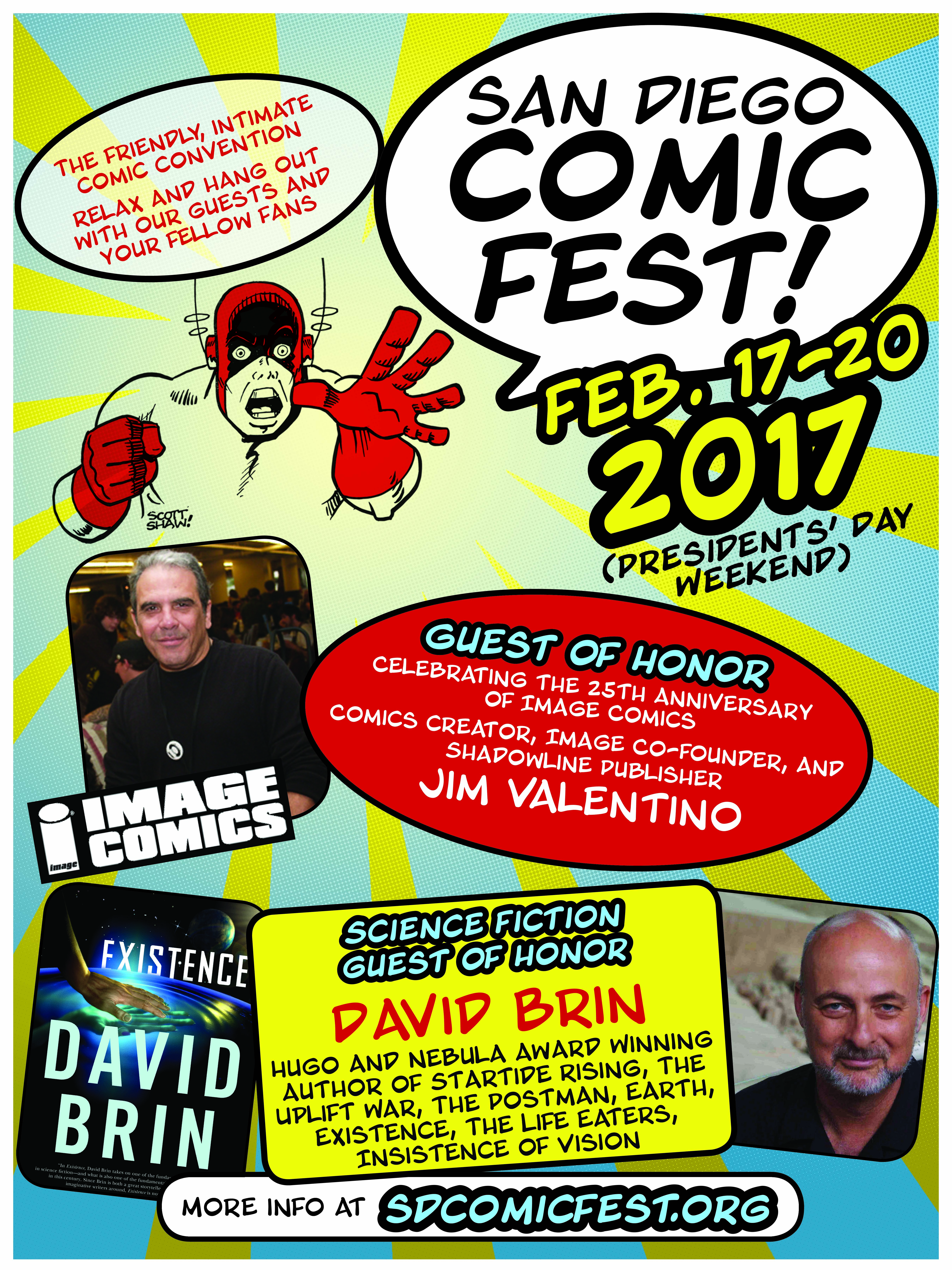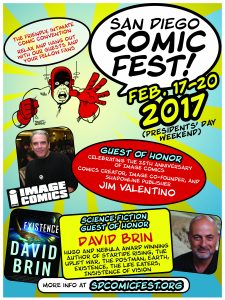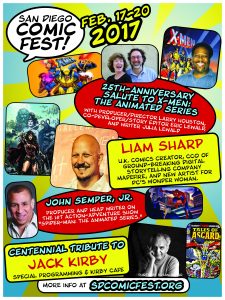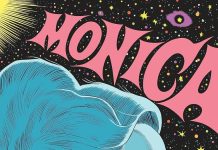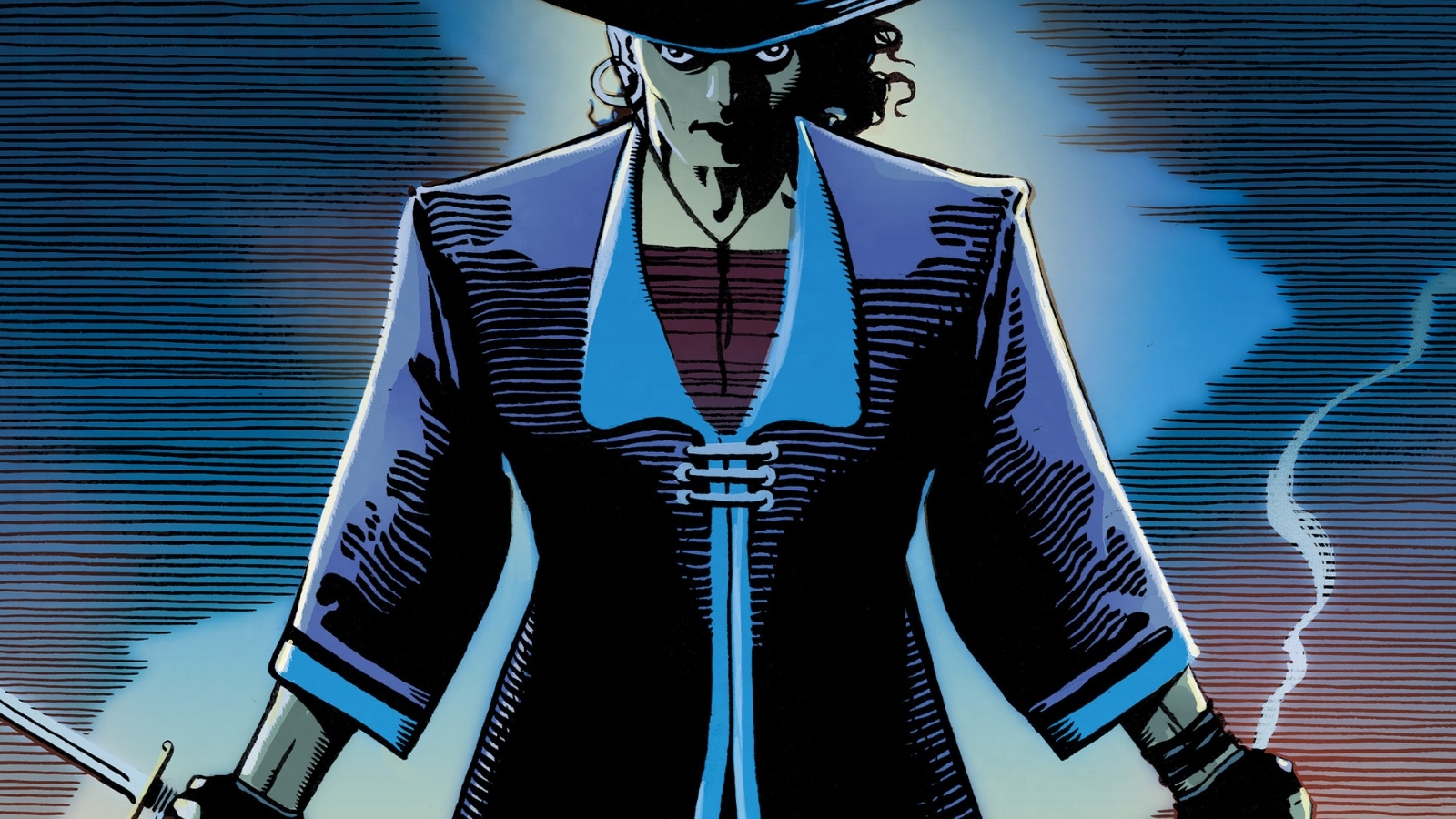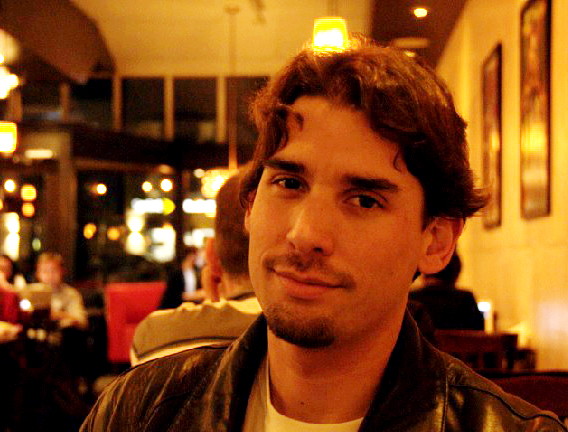
2017 will bring us yet another new year of comic conventions. When one thinks of San Diego and comics, it’s not difficult to summon images of San Diego Comic-Con, one of the largest celebrations of comics and popular media in the entire world. But there’s more to San Diego than just Comic-Con.
This year signifies the fifth year of San Diego Comic Fest. Just what is Comic Fest? As their website states, Comic Fest is:
…the friendly comic convention with a casual atmosphere and an intimate scale that allows fans to mingle directly with professionals and exhibitors. It’s the place where you can indulge your love of comics, science fiction, and films, and meet an outstanding array of professional creators without high-priced tickets, crowding, or long lines.
Not only is this “casual, comic-convention” celebrating its fifth year, but also the appointing of their new chairman, Matt Dunford. I had a chance to sit down with the Comic Fest chairman in San Diego’s Lestat’s Café on University avenue, which I might add is appropriately decorated with posters depicting iconic superhero franchises if they were played by legendary Hollywood stars and starlets. We spoke of himself, sharing his background in comics which legitimizes his appointment of chairman, and as well as Comic-Fest itself.
–
How long would you say you’ve had comics in your life?
I would say all my life. My recollections are that I started off with picture books; mainly the likes of Doctor Seuss type stuff, Little Critter, and a lot of Disney picture books, even before I could read. I remember I was always into the visual aspect of comics. There was this drive in me saying, “I need to see what they are saying… I need to be able to do this on my own… I don’t want my parents to keep reading this for me.”
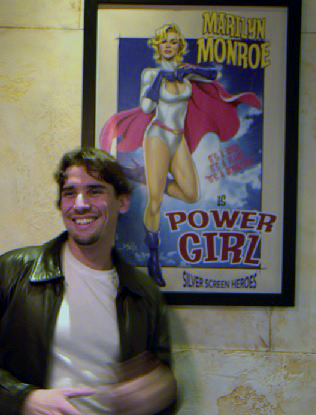
The thing that really motivated me to read was back when I was about four or five years-old, I was a hardcore “Lego-pirate” fan. There was this comic book that came with a Lego set, called “Captain Redbeard and the Lost Golden Coin.” It was a Lego-pirate story adapted in comic form. I was so excited for it that I literally learned to read just so I could read this comic. Sometime after that, I was in Toys-R-Us with my dad. I think it was 1992. He wanted to find something for my “newly acquired reading abilities.” Then I saw it; This beautiful, shiny-holographic image of “Spider-Man” on this comic set. It was thirty comics that you could buy because it was the thirtieth-anniversary of Spider-Man. I just fell in love with it. It was my first time reading Spider-Man. I just read those issues until they were practically shredded. That’s when you could really say that my true comic book fandom started. All because of Spider-Man.
Over the years, how many comics would you say you’ve acquired?
At my peak, I would say maybe between fifteen and twenty-thousand issues that I’ve had over the years from just buying and buying; From garage sales, to comic stores, just buying on a weekly basis. Though I don’t really have that many in my collection anymore. I’m in the process of donating a lot of them to public facilities like Little Fish Comic Studios and of course to the pop-culture library at “San Diego State University” which is curated by Pamela Jackson. I’ve realized that they’re not doing me much good in storage. I’ve had my fun with them, so I rather that someone else can have their fun with them now.
But I understand your omnibus and absolute collection is still one to be rivaled.
Oh yeah. I’ve been told that I have one of the most impressive hardcover, graphic novel collections out there. The single-issue stuff I just read casually, but I just like the convenience of being able to pull a book off of the shelf and showing it off. I collect all the big-hardcover ones, the hundred-dollar ones, the absolute editions from DC Comics, the omnibuses from Marvel, and all the Dark Horse library editions. For me, those are the books that I want to line my walls. I would say that there’s between seven-hundred and eight-hundred giant, oversized-hardcovers that fill my room and my apartment. They just flood the place. I just can’t tear myself away from these stories.
You spoke earlier of Little Fish Comics. You’re very active with not only them, but you were also involved very much with Club Cosplay, and now of course Comic-Fest. What has motivated you to get so involved?
Little Fish is definitely one of the biggest moments that I had in terms of breakthroughs. It’s really where my activism in comics started. But it really began earlier. It was when I was at UC Santa Barbara and finishing up my degree when I decided to swing down to Meltdown Comics for the day for a talk that they were doing when the “Watchmen” movie was coming out. They had notable writer Len Wein, co-creator of “Wolverine” and “Swamp Thing,” and editor of Watchmen [comic]. He was talking about the editing of Watchmen as a process, and it was the first time I remember hearing what an editor does. I thought, “This is awesome. This is so cool. An editor just has to be a ‘know-it-all’ about comics and just sits there telling the writers and artists how to improve the story?’ It really fascinated me. So I just kind of made that my goal of fixation.
As I researched more about editors, I discovered the career of “comic book historian.” Again, I was like, “Wow. This is really good, too.” This then sparked my interest in comic history; Not just the stories themselves, but what goes into the stories, the people behind them. This was around 2009. At that year’s [San Diego] Comic-Con, at the Jack Kirby tribute panel, there was a professor there named Roger Freedman who was a professor of physics at, oddly enough, UC Santa Barbara. He was talking about how he was one of the founding-fathers of Comic-Con back in 69’ and he spoke of this great history.
After that, I would go up to his office during office hours at UCSB and just talk his head off all day. He would tell me these great stories from the sixties and the Comic-Cons of the seventies and about hanging out with these great icons and gods of the comic book industry. Eventually when it was my finals week, as I’m scrambling to get all my projects done he emails me and CC’s comic-historian Mark Evanier and cartoonist Scott Shaw, two of these gigantic figures in the realm of comic books. He was asking if we could come up with questions for a student at UC Santa Barbara who was actually getting his PHD in “Superhero-ology.” This thing was unheard of to me. So I took time off of my schedule to come up with some questions. When I sent my questions out in the email correspondence, Mark says, “These are actually spot on. I really wouldn’t change too much about it.” And Mr. Shaw said, “Who the hell is this Matt Dunford guy and why have I never heard of him?” And that’s when Roger first gave me my title of “Matt Dunford: The World’s Youngest, Comic Book Historian.”
Steering towards the topic of Comic-Fest which of you are now the chairman, this is its fifth year, correct?
Yes, this is the fifth year for San Diego Comic-Fest.
How long have you been involved with Comic-Fest?
When they first made the announcement of it five-years ago, it was put together by Mike Towry and Richard Alf, who were in essence the founding-fathers of the San Diego Comic-Con. They wanted to bring a feel of the original Comic-Con way-back from the 1970’s when it was small and intimate. They tell a story often about when they invited Jack Kirby as their first guest of honor back in 1969. The first Comic-Con had about two-hundred and fifty attendees back when it was “San Diego’s Golden-State Comic Convention.” The second year, it attracted about five-hundred people. Jack being “the Da-Vinci” of the comic world said, “Look at how big it got! Look at this, it’s huge now. Soon it will be the place where Hollywood comes to show off the movies that they made last year and find the films that they’re going to make next year.” Everyone just laughed at Jack, saying that it would never get that big.
So, the mission of San Diego Comic-Fest was to bring the small environment of comics and comic-fandom into a place where you could interact with its creators and where it’s just not the hustle and bustle of two-hundred thousand people at a convention, but that small-intimate setting where you can meet the people and interact with them; Just hang out with them. It provides a different dynamic. Of course I do love San Diego Comic-Con in all its huge-glory, but I also think it’s a good change of pace. Where we can have this one-on-one with these creators.
What should we expect for this year’s Comic-Fest?
Oddly enough I’m already planning for the 2018 show. I like to think big. I like to bring in guests that have an established past in the history of comics, but are still working on new contemporary projects, so we may have something for the older-crowds who may not be reading contemporary comics, but can still embrace the old stuff.
What we are going to be mainly doing this year, since 2017 is the centennial birthday of Jack Kirby if he were still alive, is a strong focus with a lot of programming towards him, the “King of Comics.” If you don’t know him, he is the co-creator of “Captain America, the Hulk, the Fantastic Four,” basically the majority of silver-age Marvel; We will be celebrating his history. There are certain other figures in the comic realm who get a little more credit for creating these characters, and I think we should be embracing Jack’s side of it, because he is a real unsung hero.
We also have a lot of other special guests. Since we are not just so focused on comics in general, we also have a science-fiction room. We will be bringing in science-fiction special guest of honor David Brin, who has won Hugo and Nebula awards. We will also be bringing in special guest authors Greg Bear and Gregory Benford.
On the comic side of things, we have Vivek Tiwary, author of the graphic novel “The Fifth Beatle,” which tells about the life of Brian Epstein, the Beatles then manager. Epstein took them from an underground band to the biggest pop-culture sensation on Earth. It’s his tragic story of being a gay, Jewish man in the 1960’s and his struggles with drug addiction and trying to stay in the closet. On the animation spectrum, we will be bringing in John Semper, JR., who is of course the writer of my all-time favorite cartoon, the 1990’s “Spider-Man: The Animated Series,” which pretty much skyrocketed my Spider-Man fandom to levels unknown. We also will have Liam Sharp, a UK comics creator, currently the highlighted artist on the widely-acclaimed “Wonder Woman.” He’s just been doing the best work of his career right now with that comic. With every issue, my jaw basically drops. There will also be Mike Royer, Jack Kirby’s inker for most of his artwork throughout the 1970’s. He’ll talk about those years and then his years as an animator with Disney on the “Winnie the Pooh” cartoon.
Celebrating the 25th anniversary of the “X-Men” cartoon, we will have some of show’s creators, including Eric and Julia Lewald and Larry Houston. An finally to top things off, we will be celebrating our guest of honor Jim Valentino of Image Comics, highlighting Image’s 25th year anniversary.
–
Thank you, Comic Fest’s chairman Matt Dunford, in taking the time away from your busy comic-laden schedule. San Diego Comic Fest will be next month, February 17th to the 20th. Everyone interested in attending, check out their website: www.sdcomicfest.org


